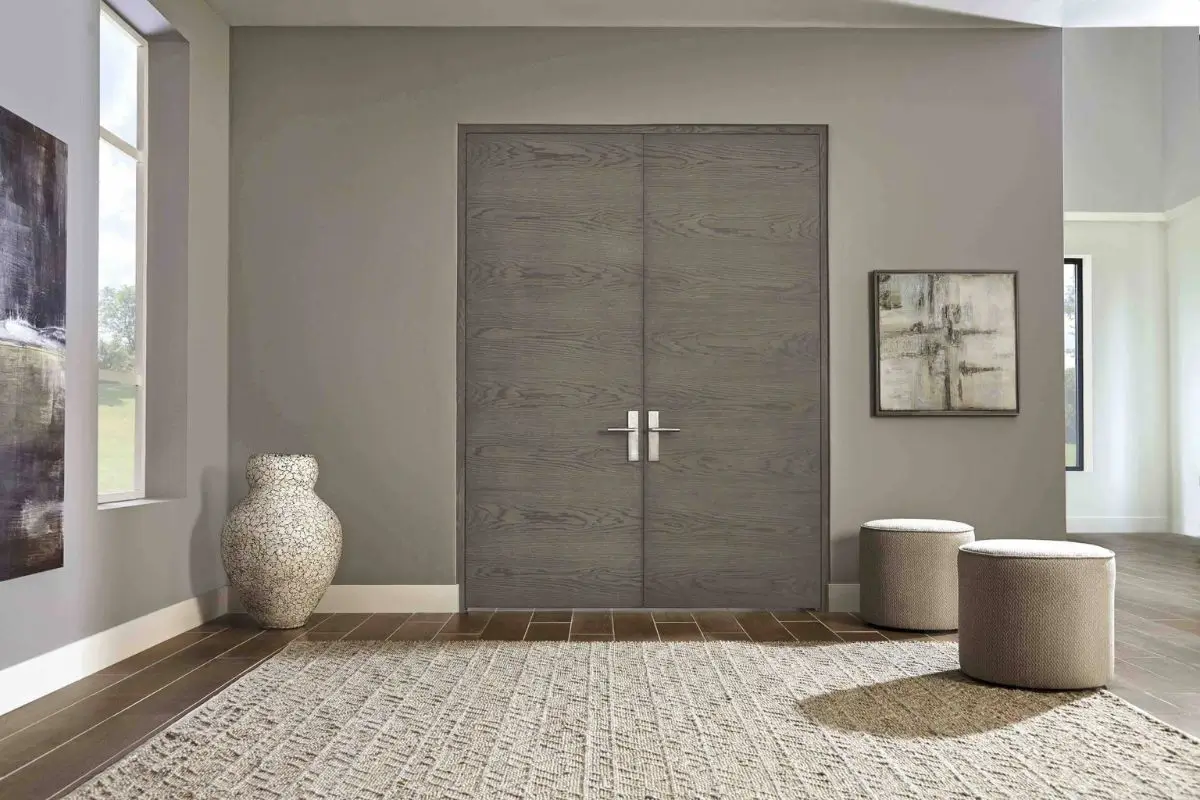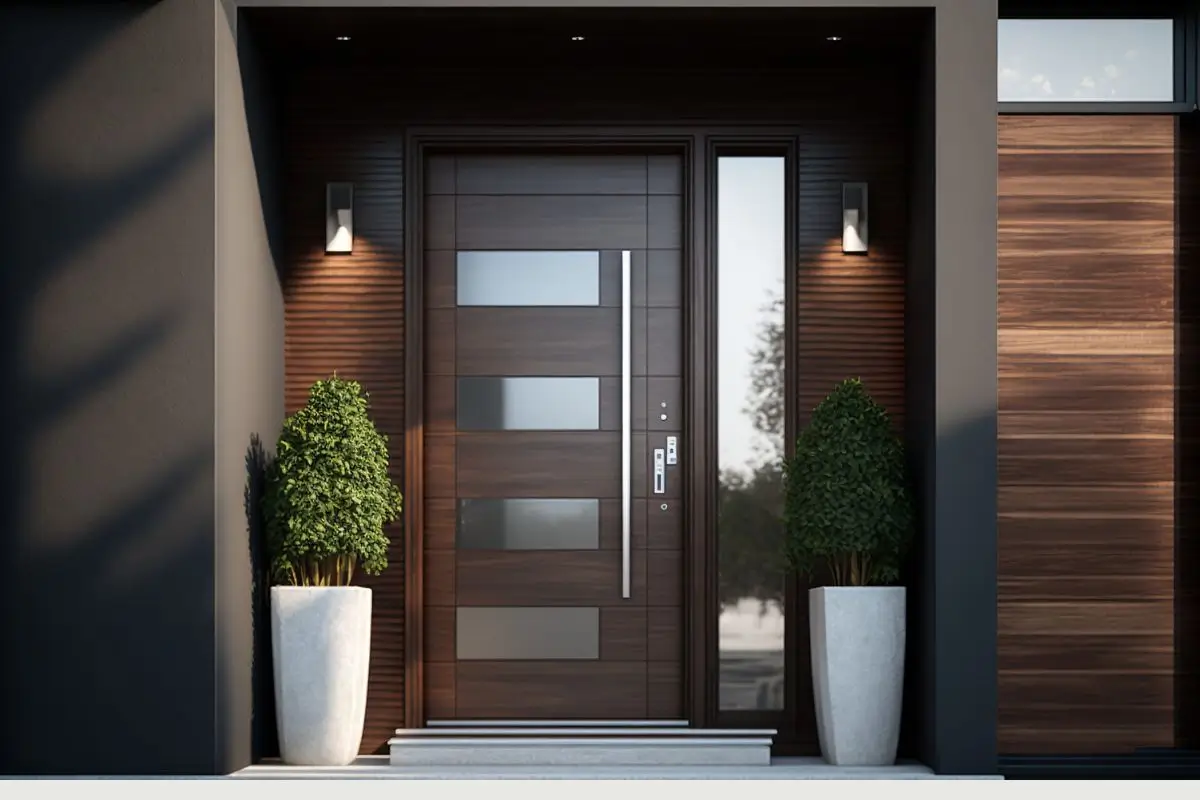
Doors are often overlooked as a key element in interior design, but they play a crucial role in defining spaces, enhancing aesthetics, and even setting the tone for an entire home. The right door can transform a room’s look and function while reflecting personal style and enhancing comfort. Here’s a guide to understanding the essential role doors play in interior design and how to choose the perfect one for your space.
Creating Boundaries and Defining Spaces
One of the primary functions of doors is to define boundaries between spaces. Interior doors offer a way to establish private and communal areas within a home, providing clear divisions that serve both functional and visual purposes. For example, solid doors create privacy in bedrooms and bathrooms, while glass-paneled doors can offer a more open feel in shared living areas. These choices help determine how each room is perceived and used, enhancing the flow and purpose of each space.
Setting the Tone and Style of a Room
The design and material of a door can establish or complement the theme of a room. Whether it’s modern, rustic, traditional, or minimalist, doors contribute to the overall aesthetic. Sleek, frameless doors can lend a contemporary vibe, while paneled or barn-style doors enhance a rustic or farmhouse look. For instance, a solid wood door brings warmth and natural beauty, while glass or metal-framed doors offer an industrial edge. By carefully selecting door styles, you can emphasize the architectural style and mood you want for each room.
Improving Lighting and Visual Flow
Doors with glass panels or open designs can significantly affect a room’s natural lighting, helping spaces feel brighter and more expansive. Glass doors, frosted or clear, allow light to pass through even when closed, making them ideal for rooms that need extra light without compromising separation. These doors can enhance visual flow, connecting spaces in a way that’s open but structured, ideal for smaller homes or areas lacking natural light.
Enhancing Acoustics and Privacy
Doors also impact the acoustics and privacy of rooms. Solid doors provide sound insulation, making them suitable for areas where privacy and quiet are essential, like bedrooms and home offices. In contrast, hollow-core or glass doors may be more appropriate for less private spaces where soundproofing isn’t as critical. Choosing doors based on their acoustic properties ensures the comfort and usability of each room, especially in busy households.
Adding Functional Features with Sliding and Folding Options
Doors don’t just swing open and closed—they come in many styles that add functionality to a room. Sliding and folding doors are great for smaller spaces or open floor plans. Sliding doors save space, as they don’t require a swing area, and can act as a movable wall between rooms. Bifold doors are perfect for closets or connecting indoor and outdoor spaces, giving homeowners flexible design options that allow for multipurpose rooms or adaptable layouts.
Contributing to Energy Efficiency
Interior doors also play a role in a home’s energy efficiency. Properly sealed doors help regulate indoor temperatures, keeping spaces warm in winter and cool in summer. For rooms that require climate control, such as home offices, studies, or media rooms, doors with good insulation help maintain comfort levels without over-relying on heating or cooling systems. High-quality doors can reduce energy costs, particularly when insulating larger areas.
Showcasing Personal Style and Customization
Doors offer a blank canvas to showcase personal style. From unique hardware to custom colors and finishes, you can personalize doors to make a statement. Painted doors in bold colors like navy, black, or even deep red can add character, while neutral tones maintain a minimalist vibe. Additionally, custom door hardware, from handles to hinges, can enhance the overall look, letting you infuse subtle details that reflect individual taste.
Maximizing Storage with Integrated Door Options
Some doors serve dual purposes by integrating storage. For instance, pocket doors or doors with built-in shelves can maximize storage in smaller spaces, especially in apartments or homes with limited square footage. Pocket doors slide into walls, freeing up floor space, while door-mounted shelves are ideal for storing items in bathrooms, kitchens, or closets. This functional use of door space can help organize clutter-prone areas, keeping rooms clean and visually appealing.
Ensuring Accessibility for All Household Members
In addition to style and function, it’s important to consider accessibility when choosing doors. Wider doorways, easy-to-grasp handles, and smooth opening mechanisms make spaces more accessible for all household members, including those with mobility issues. Sliding or barn doors with handles that can be pushed or pulled with minimal effort are great for accessibility. Ensuring that doors are easy to use and navigate improves the inclusivity and comfort of a home.
Selecting Durable Materials for Longevity
The material of a door greatly impacts its durability and longevity. Wood, metal, glass, and composite materials each have their pros and cons. For instance, solid wood doors are durable and offer timeless appeal but may require maintenance. Metal doors provide strength and are often low-maintenance, while glass doors, although fragile, create a modern aesthetic. Choosing the right material based on room use, style, and maintenance requirements will ensure that the door remains a long-lasting element of the design.
Conclusion
Doors are far more than functional entry points; they are integral to the design, comfort, and usability of a home. By carefully considering the role of each door in terms of style, functionality, and practicality, homeowners can transform their spaces into cohesive, comfortable environments. Whether you’re aiming to increase privacy, improve lighting, add a decorative touch, or enhance accessibility, selecting the right doors plays a critical role in achieving a well-designed interior that reflects your personal style and meets your family’s needs.


